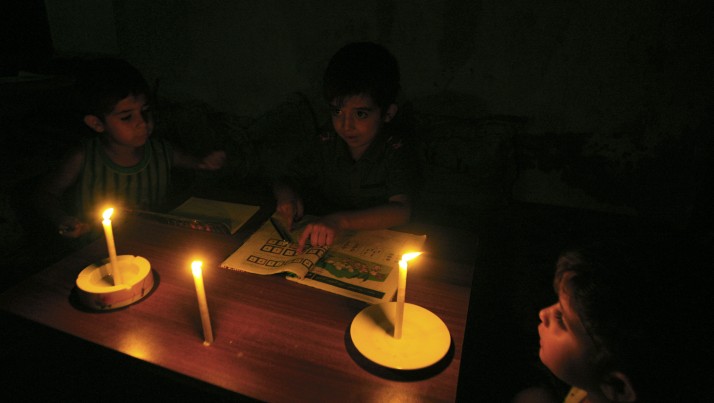Power Minister Claims “No Unscheduled Cuts” in Kashmir Last Winter — But Data Tells a Different Story
By: Javid Amin | 28 October 2025
The Official Line: “No Unscheduled Power Cuts”
On October 28, 2025, Jammu & Kashmir’s Power Minister made a confident declaration in the Legislative Assembly:
“There were no unscheduled power cuts in Kashmir during the winter of 2024–25.”
According to his statement, all scheduled curtailments were standardized and applied strictly as per the Power Development Department (PDD) guidelines. He further emphasized that:
-
Seasonal curtailment practices—long criticized for arbitrary outages—had been abolished.
-
Essential feeders faced only 0–4 hours of scheduled power cuts, depending on their technical and commercial loss percentages.
-
No distress cuts (unscheduled outages) were permitted during the entire winter season.
The message was clear: power reforms were working, and Kashmir had finally turned a corner on its chronic electricity woes.
But a closer look at the data — and the lived experience of residents — paints a different picture.
The Ground Reality: Data Doesn’t Match the Claim
While the minister’s remarks reflected policy intent, operational data and on-ground reports tell a story of shortfall, not sufficiency.
The Numbers That Matter
According to a December 2024 internal report from the Power Development Department (PDD):
-
Kashmir required a minimum of 1,700 MW of electricity during peak winter demand.
-
Actual availability remained below 1,500 MW, leaving a 200 MW deficit.
-
Officials acknowledged that distress cuts were inevitable due to the supply-demand gap, particularly during sub-zero nights when heating demand peaked.
In short, despite the official narrative of stability, the system was under strain — and the public felt it.
Residents Tell a Different Story
Across Kashmir Valley — from Kupwara to Pulwama, and Srinagar to Shopian — residents reported frequent power cuts during December and January.
Local media archives and citizen reports documented:
-
Multiple daily outages lasting 1–3 hours, often without prior notice.
-
Voltage fluctuations damaging home appliances.
-
Entire feeder zones going dark despite being categorized as “low-loss” or “essential.”
“We were told there would be no distress cuts, but every evening we sat in darkness,” said Imran Ahmad, a resident of Ganderbal. “Even the so-called essential feeders faced blackouts.”
Social media platforms, especially Kashmir-based news handles, were flooded with complaints and videos of residents protesting erratic power supply — directly contradicting the minister’s claim of seamless service.
Understanding the Contradiction
The disconnect between the official version and public experience stems from two overlapping realities:
-
Policy vs. Implementation
-
While the government may have planned zero unscheduled cuts, the operational deficit made adherence impossible.
-
Without sufficient supply, even “scheduled” curtailment schedules became meaningless in practice.
-
-
Data Transparency
-
Official feeder-wise data often omits distress interruptions or records them as load management rather than unscheduled cuts.
-
As a result, public-facing data appears “clean,” even when actual outages are frequent.
-
“You can’t declare there were no unscheduled cuts when you were short by 200 MW,” said a senior PDD engineer, requesting anonymity. “The grid has limits — and the valley always pays the price.”
What This Means for Kashmir’s Power Future
The episode underscores a larger systemic issue: the gap between administrative claims and ground realities in Jammu & Kashmir’s power sector.
Key Takeaways:
-
Infrastructure Lag:
Transmission and distribution losses in Kashmir remain above 60% in some zones — among the highest in India.
Many feeders are outdated and overloaded, unable to sustain consistent voltage. -
Ineffective Demand Forecasting:
Seasonal demand, especially during winter when electric heaters, blowers, and geysers are in heavy use, is chronically underestimated. -
Insufficient Local Generation:
Despite massive hydroelectric potential, Kashmir relies heavily on imports from the northern grid, leaving it vulnerable to national-level shortages. -
Lack of Transparent Communication:
Power cuts are often downplayed or poorly communicated, leading to public frustration and loss of trust.
The Human Impact
For households and businesses, the cost of erratic electricity is immense.
-
Students struggle to study in darkness during board exam season.
-
Small industries and cold storage units incur heavy losses.
-
Patients on home oxygen or medical devices face life-threatening disruptions.
“It’s not just about lights going off,” said Parveen Akhter, a shopkeeper from Anantnag. “Power cuts decide whether my stock survives the winter.”
The Way Forward
Experts believe that addressing Kashmir’s power woes requires a three-pronged approach:
1. Upgrade Transmission & Distribution Network
-
Modernize feeder lines and substations.
-
Replace outdated transformers and adopt smart metering for accurate monitoring.
2. Invest in Local Power Generation
-
Expedite small hydro projects on Jhelum and Sindh rivers.
-
Encourage solar rooftop and hybrid projects in rural blocks.
3. Transparent Public Communication
-
Introduce real-time outage dashboards (like Delhi’s NDMC system).
-
Publish daily deficit data to restore credibility and public trust.
“Citizens can tolerate cuts if they’re informed — not when they’re misled,” said energy policy analyst Aamir Nazir.
Conclusion
The power minister’s statement may have projected administrative confidence, but the numbers — and the night-time silence of Kashmiri homes — tell a different truth.
Until policy promises match grid realities, “no unscheduled cuts” will remain more aspiration than achievement.



